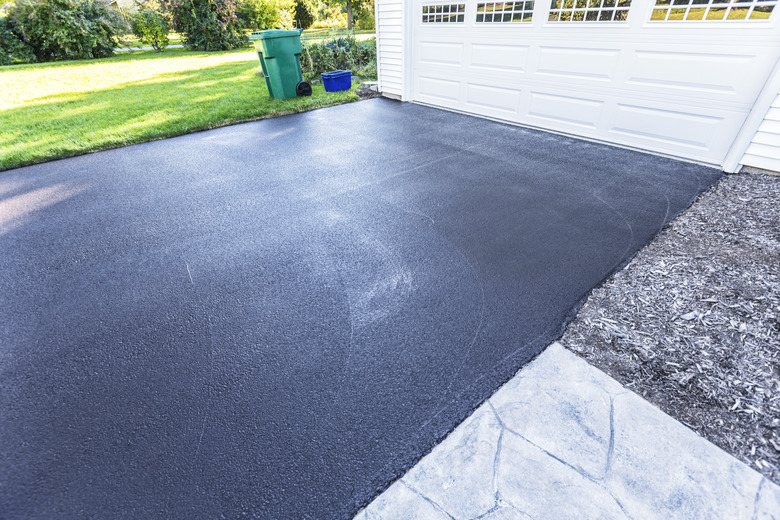Can You Lay Asphalt In The Rain?
We may receive a commission on purchases made from links.
Asphalt laying can be done during light rain but is most successful when completed during warm, dry weather. It is an oily material that repels water. However, one type of asphalt cools too quickly in chilly rain and another hardens slowly or is damaged by excess water. Also, moisture in the gravel and soil subbase of any asphaltic product can lead to problems. So road construction crews race against precipitation and the seasons.
Tip
Laying asphalt in the rain varies according to the amount of water dropping from the sky, temperature and type of asphalt being applied to the road surface.
Hot Work in the Summer
Hot Work in the Summer
Asphalt laying is primarily a summer project in which road crews endure searing sun and drying wind. As Irish songwriter Ewan McColl indicates in his adaptation of the 1880s ballad "The Hot Asphalt," summer paving is a punishing occupation: "The sun was blazing down; I thought me back would melt." As McColl implies, drivers listening to the smooth hum of their tires while speeding along asphalt highways should be thankful to road crews.
However, on occasion, rain provides respite to the hard-working road crews by halting the work. It all depends on how heavy the rain, how cold the temperature and whether the crew is using a hot or cold mix asphalt product.
Hot and Cold Mix Asphalt
Hot and Cold Mix Asphalt
Asphalt is a term that refers to all mixtures of aggregate (crushed rock) and the petrochemical product bitumen. These products include hot-mix and cold-mix asphalt and Macadam, which is also known as tar-chip paving. All are referred to as "blacktop."
Cold-mix asphalt is mixed with water and a chemical emulsifier. It doesn't require the heating necessary in hot-mix, but takes about two weeks versus a few days to set up. It isn't used as frequently as hot mix or Macadam but is useful when fixing potholes or paving during cooler weather.
Weather and Temperature
Weather and Temperature
Heavy rain or snow halts a paving project. However, laying hot-mix asphalt during light rain or misty conditions is possible. With cold mix, laying asphalt in near-freezing conditions is possible because it is so flexible in a broad range of temperatures. However, cold mix already contains a lot of water; too much extra water or freezing temperatures can lead to its failure.
Warm temperatures give contractors more time to lay a hot-mix asphalt road properly. When installing hot-mix, the temperature should be above 60 degrees Fahrenheit for a layer 1 1/2 inches thick. Hot mix can be laid at 40 degrees Fahrenheit, but cooler temperatures cause it to cool rapidly and require a thicker layer of asphalt to slow the cooling. At 40 degrees Fahrenheit, a 1.5-inch layer becomes inflexible in 16 minutes whereas a 3-inch layer can be worked for 45 minutes.
Potholes and Rain
Potholes and Rain
Asphalt is applied over a thick base of crushed rock called aggregate. If there is a lot of water in the aggregate and underlying soil, these base materials won't compact properly, which can lead to potholes if asphalt is laid before the subbase dries. Dry ground can support more weight than wet ground.
A wet subbase makes pavement more susceptible to cracking and caving in. If it rains after the subbase is laid, laying asphalt the following day, even if the sun is shining, won't be possible.
